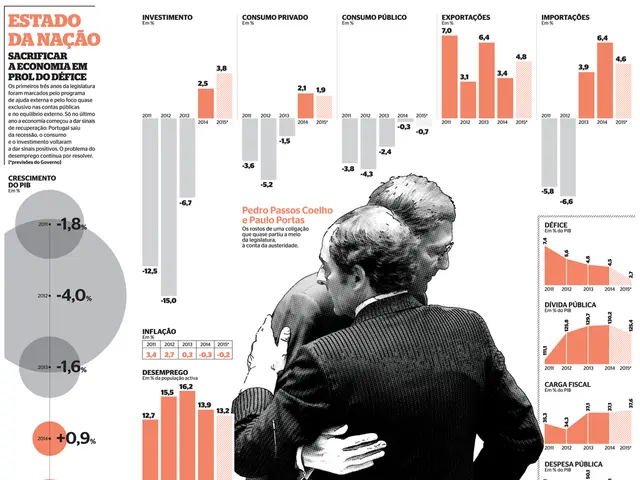Comprehensive Insight: Exploring the Depths of Obsessive-Compulsive Disorder (OCD)
Obsessive-Compulsive Disorder (OCD) is a mental health condition that affects individuals across age, gender, and backgrounds, often requiring treatment. Contrary to common misconceptions, OCD is not just about being overly clean or having a preference for order.
Misconceptions vs. Reality
Here are some common misconceptions about OCD and the reality behind them:
| Misconception | Reality | |-----------------------------------------------|----------------------------------------------------------------------------------------------------------------------------------------| | OCD means being just germaphobic or clean | While some individuals with OCD have fears related to germs leading to handwashing, OCD manifests in many different ways beyond cleanliness, including obsessions about morality, violence, relationships, and more. | | OCD is just wanting everything perfect | Perfectionism-like behaviors may appear, but they usually stem from attempts to reduce anxiety linked to uncertainty rather than a desire for perfection itself. | | People with OCD can simply “relax” to get better | OCD is a serious mental health disorder requiring proper treatment; telling someone to relax does not alleviate symptoms. | | OCD compulsions are always physical actions | Compulsions can be mental rituals, such as counting, intense rumination, or reviewing events repeatedly. OCD without visible physical compulsions is sometimes called “Pure OCD” and can be harder to detect. | | Intrusive thoughts reflect character or morals | Intrusive thoughts are common in OCD but do not define a person’s character or morals; they are distressing precisely because they often go against one’s values. The brain’s fear response mistakenly treats these thoughts as threats, though they do not predict reality. | | People with OCD are unique in having disturbing thoughts | OCD fosters isolation by tricking sufferers into believing they are alone in their experiences, which is false; many people with OCD have similar intrusive thoughts and compulsions. |
These misconceptions can prevent people from seeking help or recognizing OCD as a genuine medical condition deserving attention comparable to physical illnesses like diabetes or cancer. Understanding the diverse presentations of OCD—ranging from contamination fears to mental compulsions and intrusive thoughts—and recognizing it as an anxiety disorder with serious impacts is crucial to providing effective support and reducing stigma.
The Stages of OCD
OCD unfolds in a sequence of distinct stages: Obsession, Compulsion, and Relief. In the Obsession stage, individuals experience intrusive thoughts or images that disrupt their mental equilibrium. These thoughts can be about anything, from fear of contamination to moral dilemmas. In the Compulsion stage, individuals engage in repetitive behaviors or mental acts as a response to the distress induced by obsessions. These actions, while temporary, provide a sense of relief in the Relief stage.
Treatment for OCD
Addressing OCD involves a comprehensive strategy encompassing medication and psychotherapy. Cognitive-Behavioral Therapy (CBT) is a pivotal psychotherapeutic approach for treating OCD. Through cognitive restructuring, individuals learn to challenge and modify maladaptive thought patterns. Exposure and Response Prevention (ERP) is an integral component of CBT for OCD. ERP involves controlled exposure to obsessive triggers, paired with refraining from engaging in compulsive behaviors.
SSRIs like fluoxetine, fluvoxamine, and sertraline are commonly prescribed for OCD. It's essential to tailor the choice of SSRIs to individual needs in medication management.
Common signs and symptoms of OCD include obsessive thoughts or images, repetitive behaviors or mental acts, fear of contamination or germs, need for symmetry or order, fear of harm or danger, excessive checking or reassurance seeking, hoarding or collecting items, and avoidance of certain situations or objects.
It can often be difficult to tell when a person has OCD, as many people hide their compulsions in public due to fear of being exposed. However, recognizing the signs and symptoms, understanding the reality of OCD, and providing support can help individuals manage this debilitating disorder more effectively.
[1] Abramowitz, J. S., Taylor, S., & McKay, D. (2009). Obsessive-Compulsive Disorder. Lancet, 374(9688), 367-376. [2] Hyman, A. (2013). The Truth About OCD: My Unrelenting Battle with Obsessive-Compulsive Disorder. Avery. [3] Freeman, D., & Garety, P. (2015). Cognitive Therapy for Psychosis. Guilford Press. [4] Neziroglu, F., & Phillips, K. A. (2012). Overcoming Obsessive-Compulsive Disorder: A Comprehensive Guide Using Exposure and Response Prevention. New Harbinger Publications.
- OCD manifests in many ways beyond cleanliness and perfectionism, affecting aspects of well-being such as moral, violent, and relationship-related obsessions, which are not commonly associated with the condition.
- InTrusive thoughts are common in OCD, and they often go against one's values, but they do not define a person's character or morals, as they are symptoms of an anxiety disorder within the mental health spectrum.
- Seeking help for OCD is crucial due to its diversity of presentations, ranging from contamination fears to mental compulsions and intrusive thoughts, and understanding this range is essential to debunking misconceptions and providing effective support for individuals affected by OCD, promoting better health-and-wellness outcomes.




